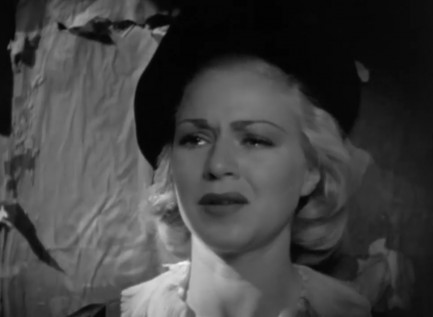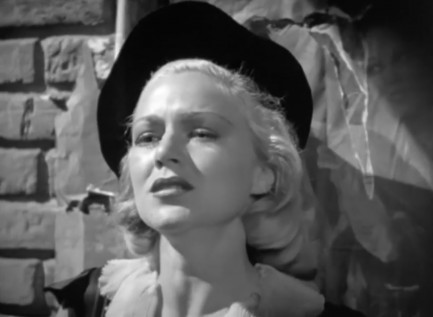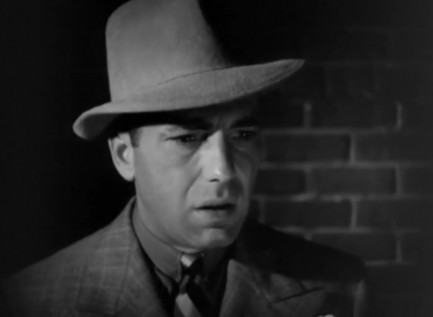 The whole world sings with her—except Bogart. 
The first time we saw Lizabeth Scott sing was in the film noir Dead Reckoning, in which she starred with Humphrey Bogart. Scott breaks into a little torch number while they're at dinner. Old fims, including old noirs, often required female leads to sing, but having Scott sing at the table was a twist. Unlike the normal set-up in which the actress sings onstage sa a performer in a nightclub or casino, it was closer to the technique that would become standard in musicals, with the song flowing directly from the dialogue. Bogart mostly seemed baffled, possibly even spooked. You can see what we mean here.
We realized only recently that Scott, backed by Henri René and His Orchestra, released this 1958 album on RCA. She has a somewhat smoky speaking voice, so we were intrigued by the possibilities of an album. She performs such classics as “I'm in Love Again,” and “When a Woman Loves a Man,” and her vocal instrument is really nice, residing in the deep and mellow mode. If you like orchestral pop music you'll probably like the record. Give her a listen here and here, while the links last.
 I've run through every bit of fluid in this thing in just a week. Hmm. Maybe I should cut back on my smoking. 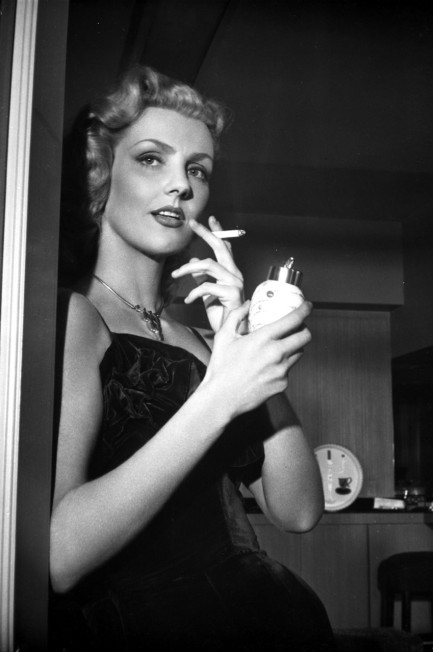
Dolores Moran's film career started with a bang when her first credited role was as the smoldering Hellene de Bursac in the 1944 thriller To Have and Have Not when she was only eighteen. She was the reason Humphrey Bogart tossed off the memorable quip, “I don't understand what kind of a war you guys are fighting. Lugging your wives with you. Don't you get enough of them at home?” It would have been easy to assume nobody would ever get enough of Moran, but after very nearly outshining Lauren Bacall in that film she managed perhaps ten more credited screen roles. Health issues had partly to do with it, and a marriage at age twenty probably curtailed her as well, though her husband was the film producer Benedict Bogeaus. But she wasn't the first flame to fizzle in Hollywood—that's part of the nature of the place. The above shot was made as a promo for her next-to-last film Count the Hours. That was in 1953.
 The fundamental things apply. 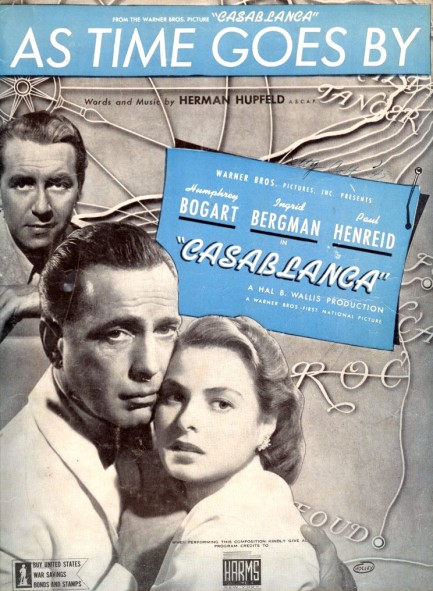
Here’s something nice we ran across on an auction site. It’s a piece of sheet music for “As Time Goes By”, which is a song written by German composer Herman Hupfeld and sung by Dooley Wilson’s character Sam in 1942’s Casablanca. The tune is inextricably identified with the film, but it was actually written for the 1931 Broadway show Everybody’s Welcome, where, in its complete form, it becomes clear the song is just as much about stress as about romance. You wouldn’t know that of course, because you don’t know the lyrics—really, who does? But today’s your lucky Monday—you can brush up on the words here. Just remember these two music fundamentals: if you sing, please do so from the diaphragm; and if you sing badly, blame it on booze.
 There's a new prosecutor in town—and his name is Humphrey. 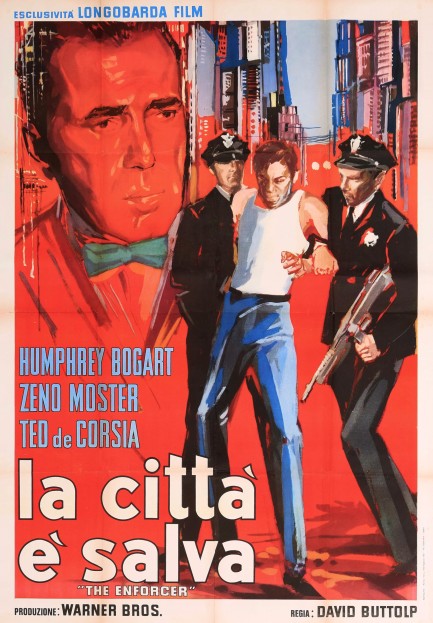
Above: an Italian poster for La città è salva, better known as The Enforcer, starring Humphrey Bogart as a prosecutor tasked with cleaning up rampant corrutpion in the big city. The movie is middle tier for Bogart, but that means it's still very good. The poster is uncredited, but spectacular, with its abstract skyscraperscape and elongated figures. If we ever find out who painted it we'll updated this post. La città è salva premiered in Italy today in 1951.
 With Bogart and Bacall in the starring roles an unusual fugitive movie takes flight. 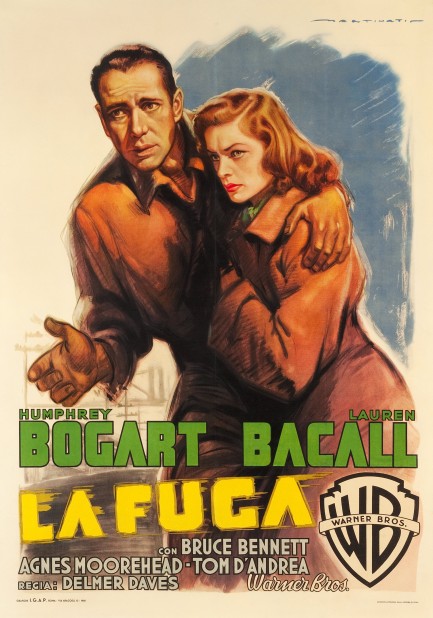
This beautiful poster for La fuga was painted by Italian artist Luigi Martinati, and you doubtless recognize Humphrey Bogart and Lauren Bacall. They starred in four movies together and had a dual cameo in a fifth. This promo was made for their fourth outing Dark Passage, retitled to “the escape” in Italy. And therein lies the plot. Bogart breaks prison and undergoes a backalley cosmetic surgery procedure on his face in order to evade the cops and have a chance to solve the crime for which he was unjustly sent up the river. The filmmakers decided to use the gimmick of having the first section of the film in Bogart-vision—i.e. first person pov until he gets his new face. It makes sense. Otherwise they'd have needed to have another actor play pre-surgery Bogart, or have resorted to clunky make-up and prosthetics. Bacall co-stars as unlikely shelter and succor, plus the prospect of love—if Bogie can survive. It's a good movie.
But we're going to tack upwind at this point and suggest that Dark Passage, while good, isn't as scintillating as its reputation. Certainly it isn't in the class of To Have and Have Not, Key Largo, or The Big Sleep. But hey—it stars B&B, and that's all audiences of the era really cared about. Three years into her film career Bacall had grown into superstardom—or stardom as it was called back then—and dished out a performance here that did plenty with a thin script and a belief defying scenario. The other star here is San Francisco, where most of the movie was shot. The city appeared in many period productions, but we can't think of it ever being used to such an extent as in Dark Passage. Since we lived across the Bay in Berkeley for a couple of years, we got to know San Fran well and it's fun to see it as it once was. Dark Passage—slightly overrated and all—is fun too. It premiered in the U.S. in 1947 and reached Italy today in 1948.
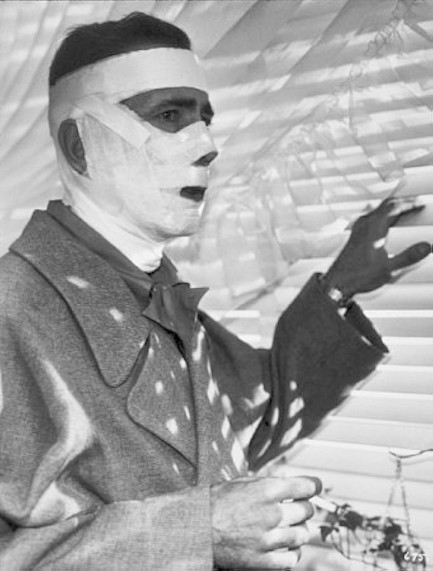 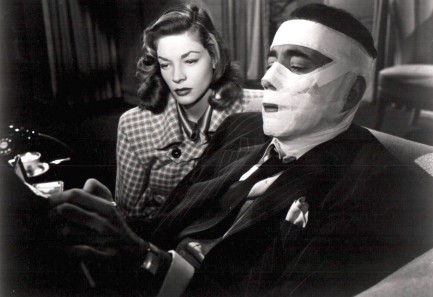 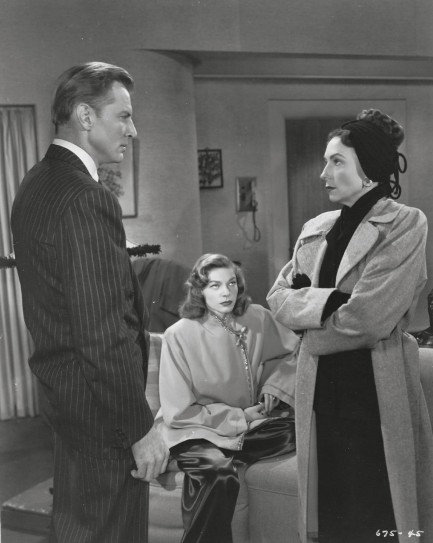 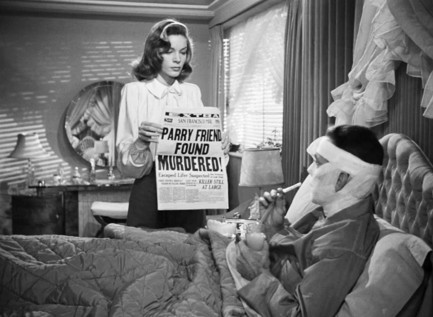 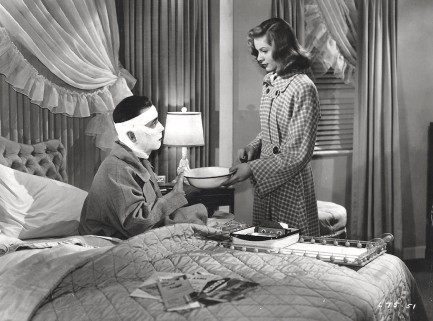  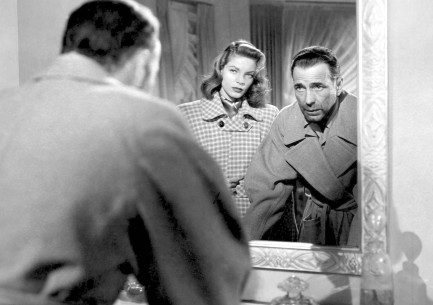 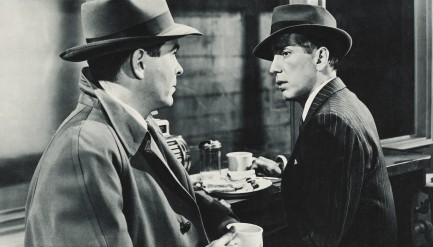 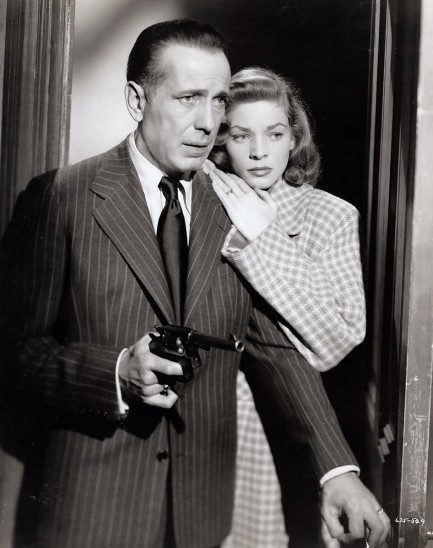 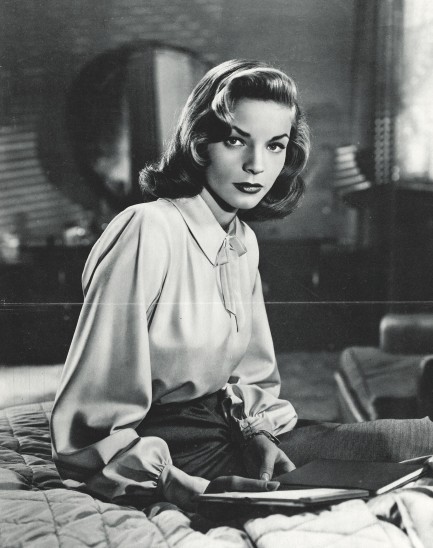 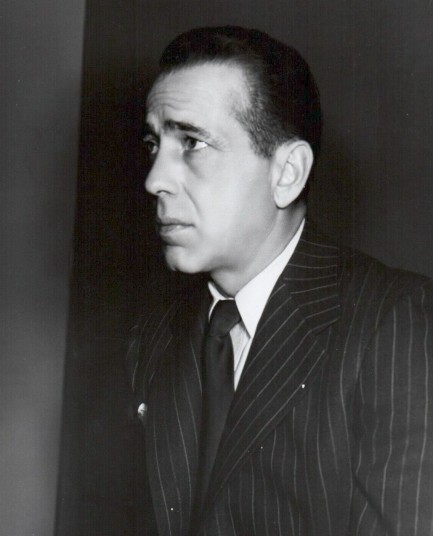 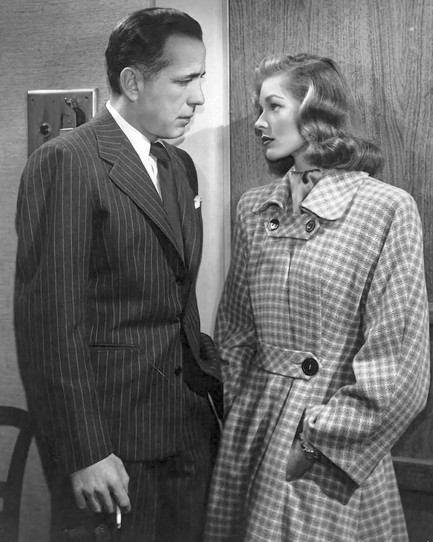 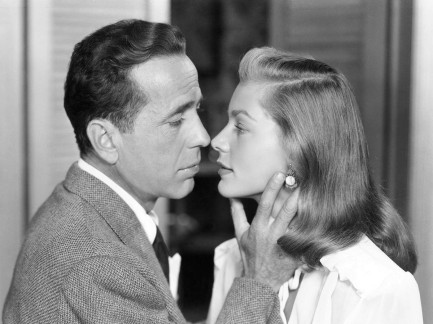
 Bogart may own the café, but Bergman owns the room. 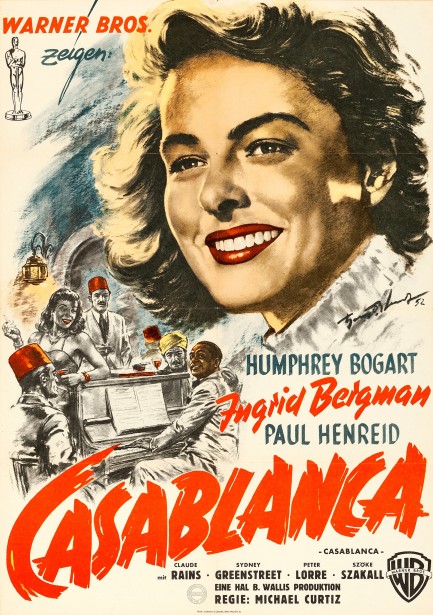
Since we're checking out European poster art today, above is a nice West German promo for the classic wartime drama Casablanca, with Humphrey Bogart and Ingrid Bergman. We've covered just about all the nice promos for this film: Japanese, Spanish, Italian, and of course the classic U.S. version. Plus we wrote a post about the movie's brilliant set design. But this additional poster is worth sharing because it's the first time we've featured artist Hans Otto Wendt, a well regarded figure who worked during his youth as a draftsman in the newspaper industry, before taking his talents afield and collaborating with Deutsche London Film, Warner Bros., Twentieth Century Fox, and other major studios. He worked until 1969, at which point he retired due to poor health, and finally died in Berlin in 1979. For the above effort, note that he not only made Bergman the star of the poster, but the star of his handpainted lettering too. Casablanca premiered in West Germany today in 1952.
 I see a tiny island! If we make it there we can recite captions from classic castaway cartoons until we're rescued! 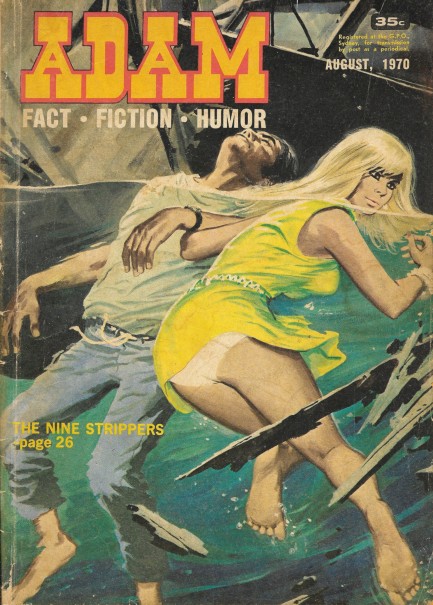
We have another issue of Adam today, with a fun cover illustrating Ron Rawcliffe's story, “The Nine Strippers.” Obviously, with a title like that we had to read it, and it deals with a charter boat captain hired to take nine exotic entertainers upriver into the wilderness under mysterious circumstances, and it turns out they've been hired by an organized crime cabal. When the gathering is raided by federal police the captain must escape intact with bullets flying, strippers fleeing, and mafiosi trying to hijack his boat. Also in this issue of Adam you get fiction by Leonard Calhoun and John P. Gilders, plus a bit of boxing and a lot of models, including German born Israeli actress Helena Ronée just below, and French actress Catherine Rouvel in the feature "She Wins Them All." And circling back to the cover and its two potential castaways, look forward to this: we have another set of castaway cartoons coming up.
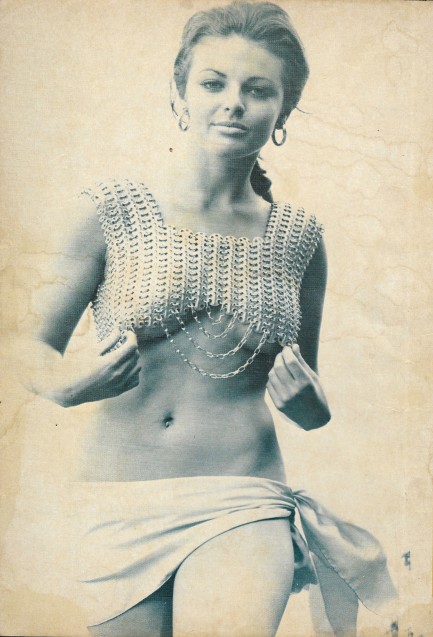 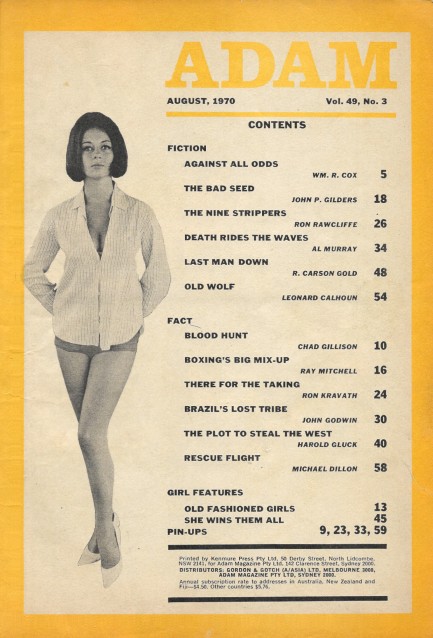 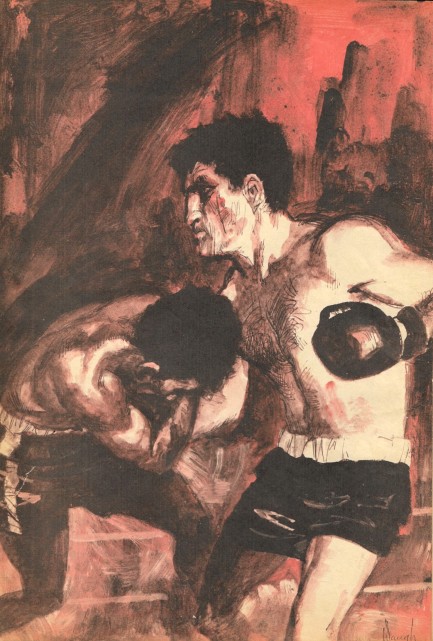 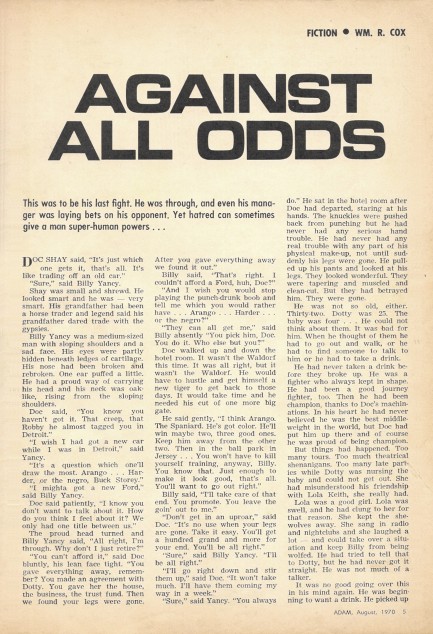 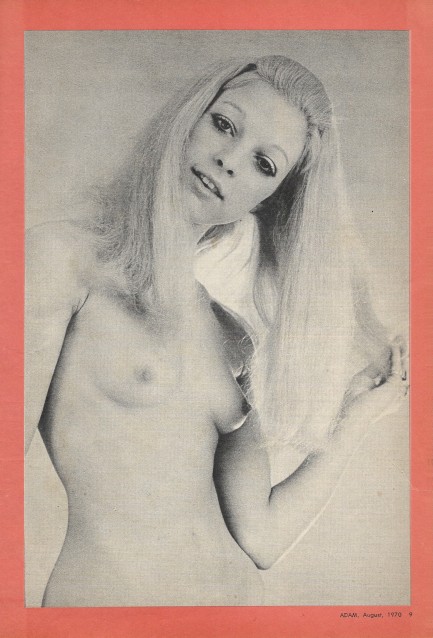 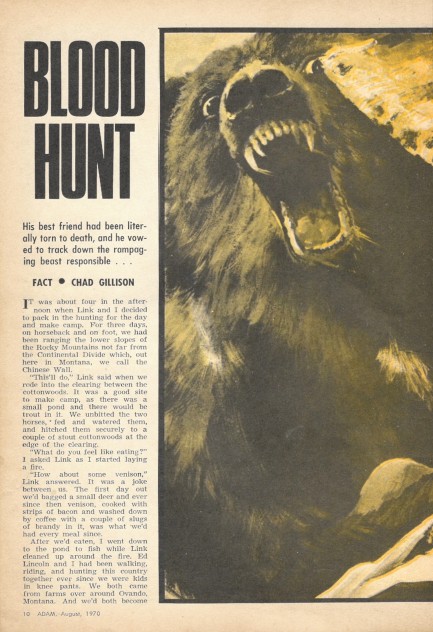 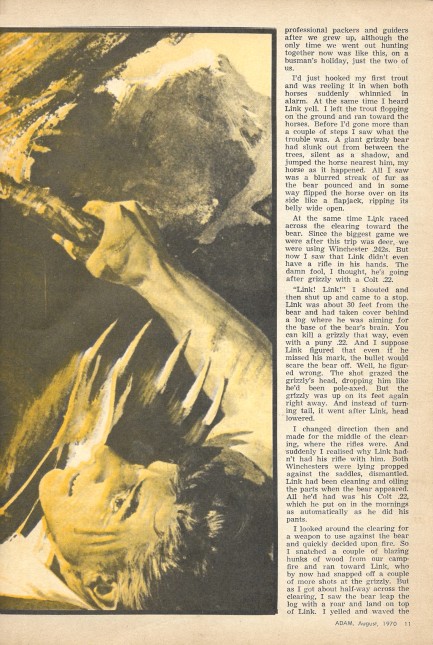 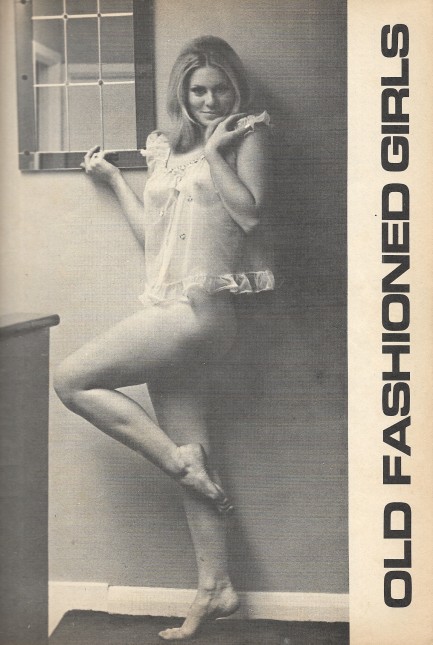 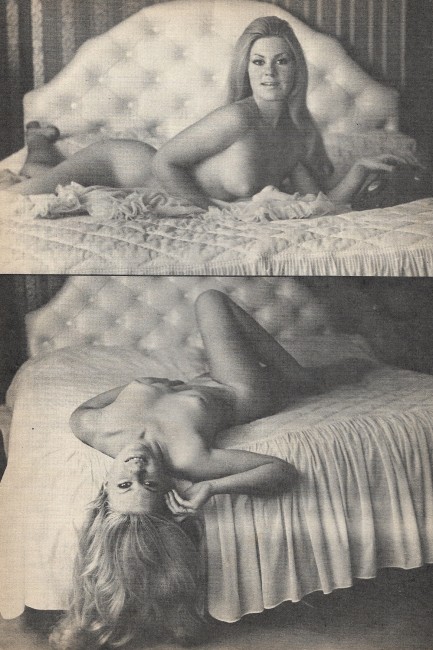 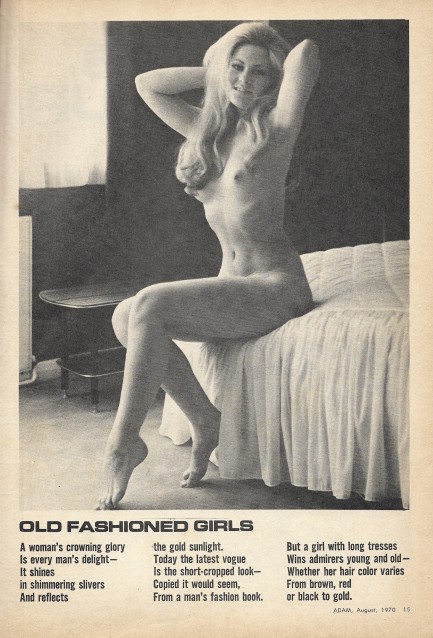 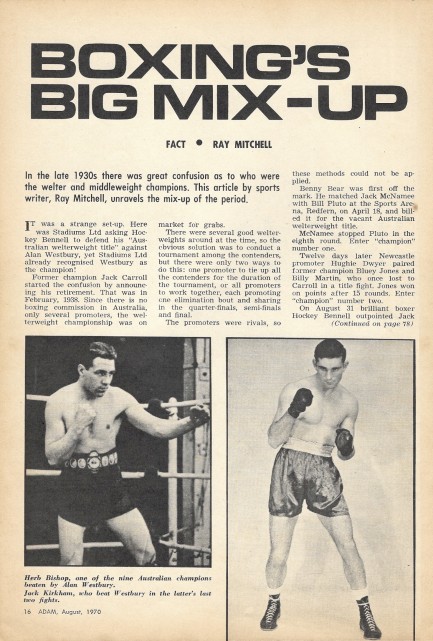 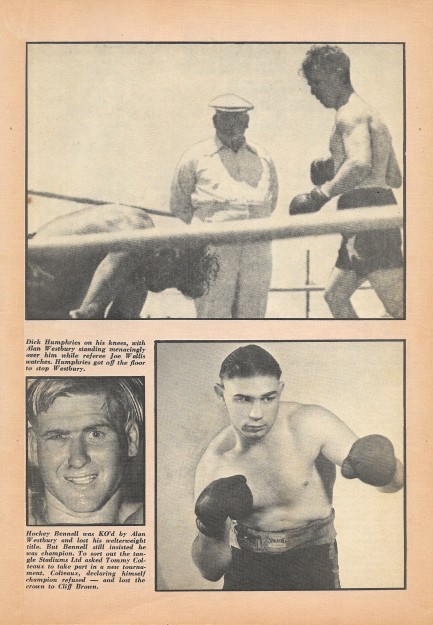 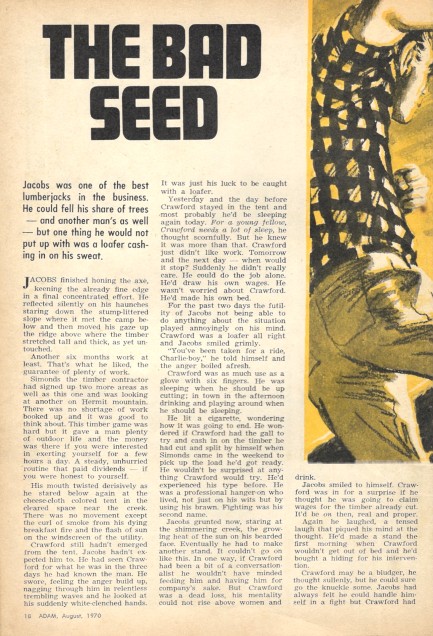 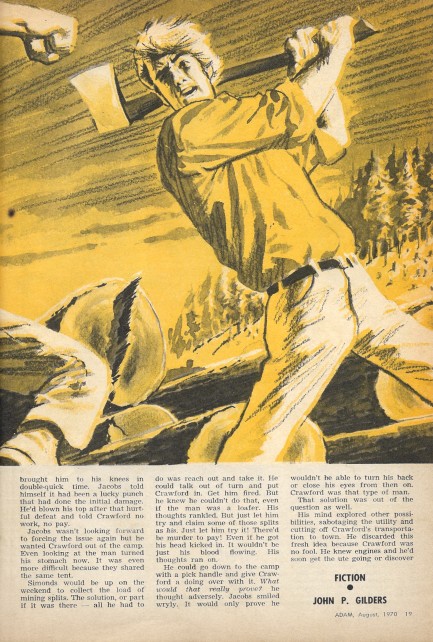 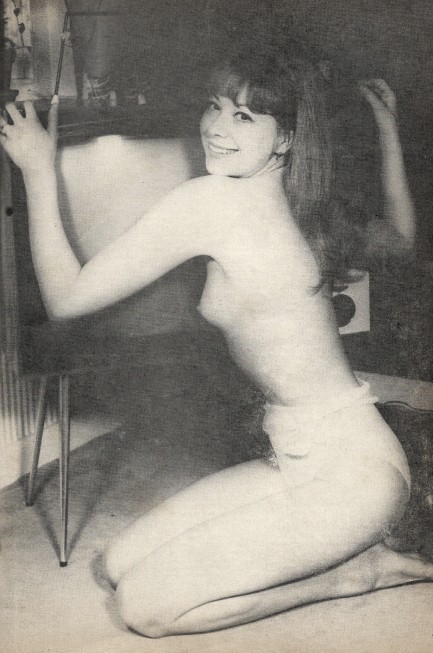 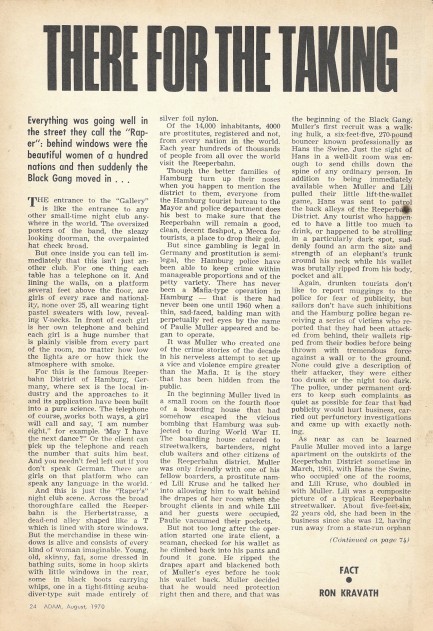 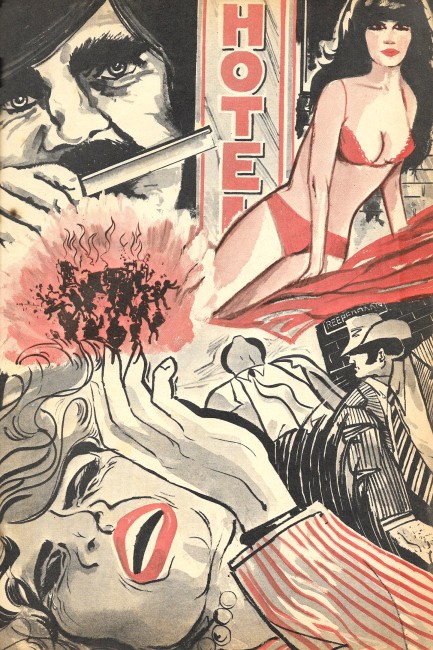 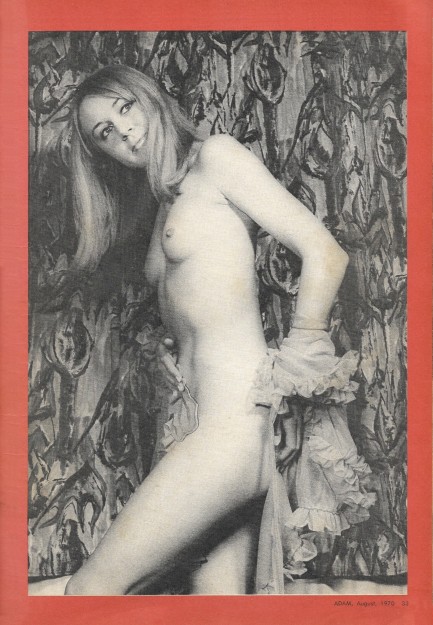 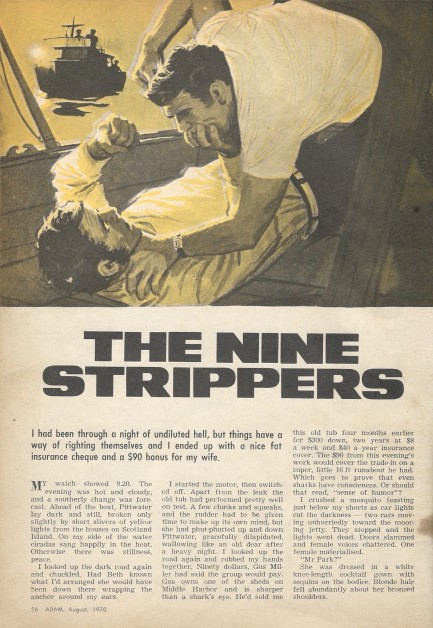 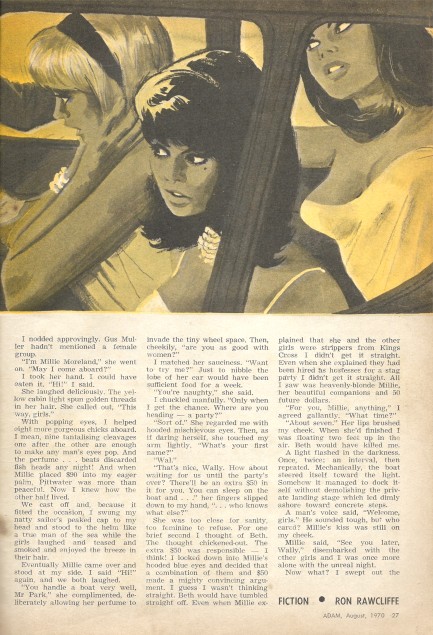  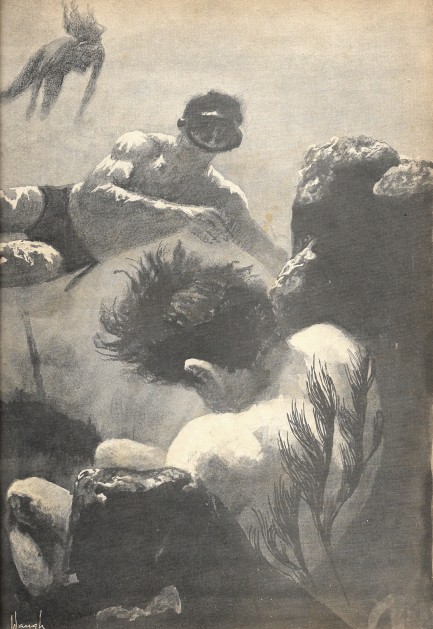 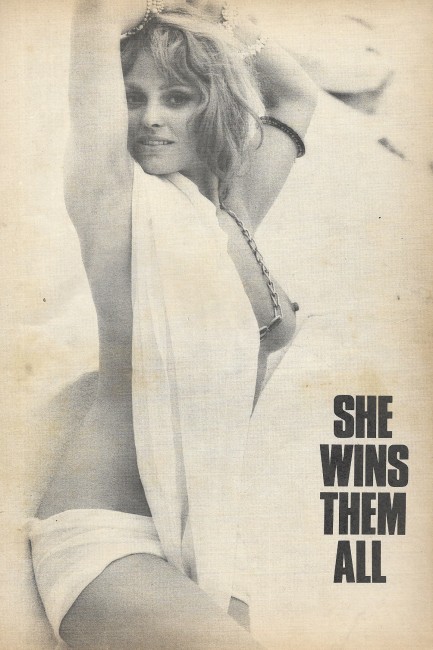 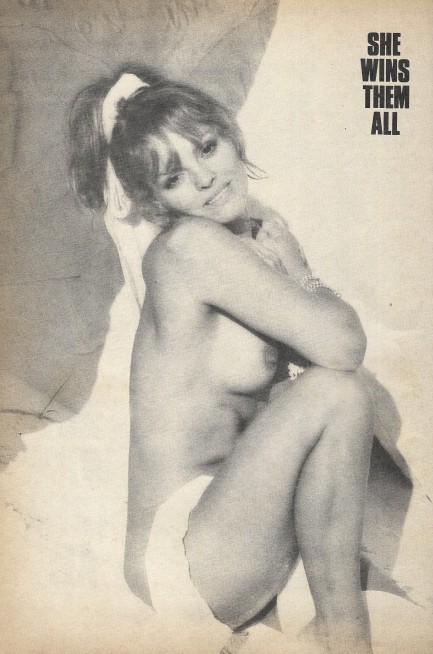 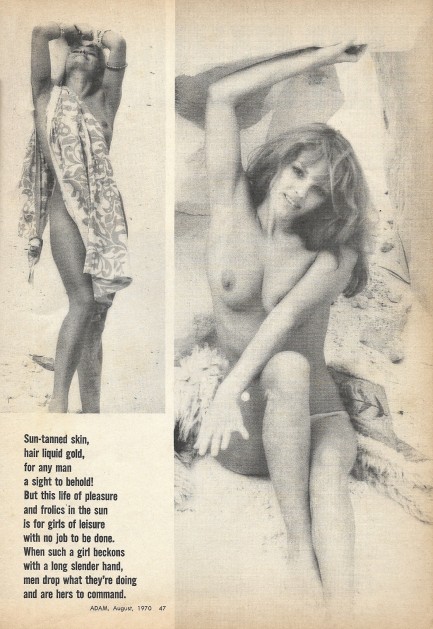 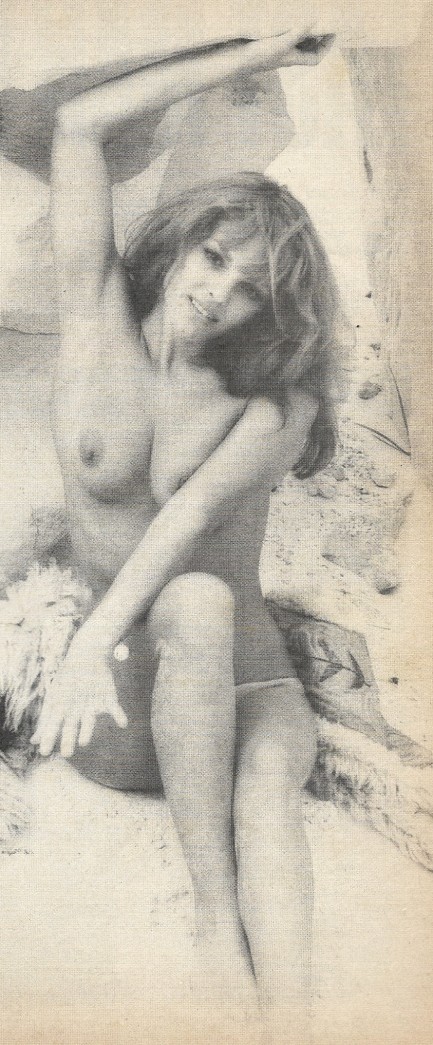 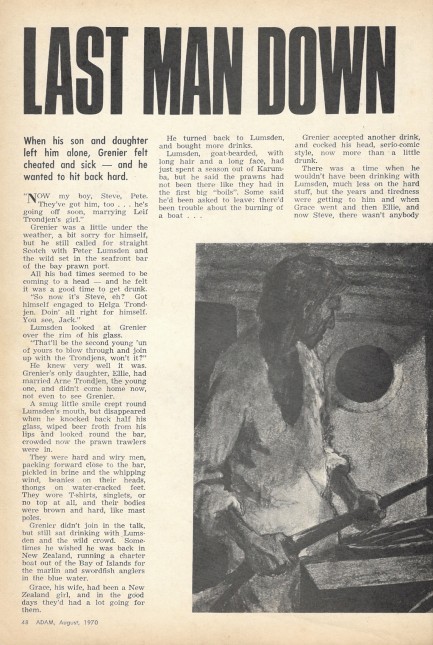 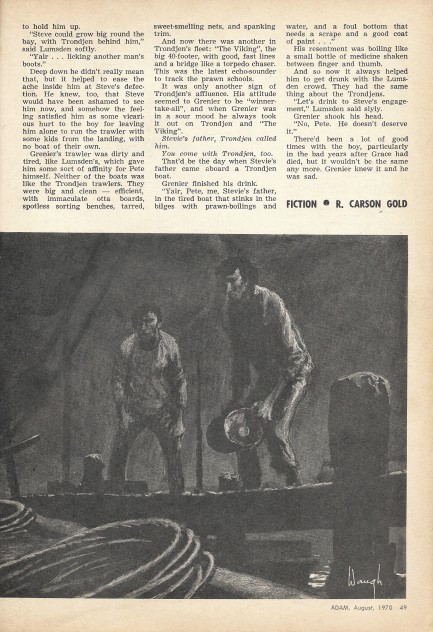 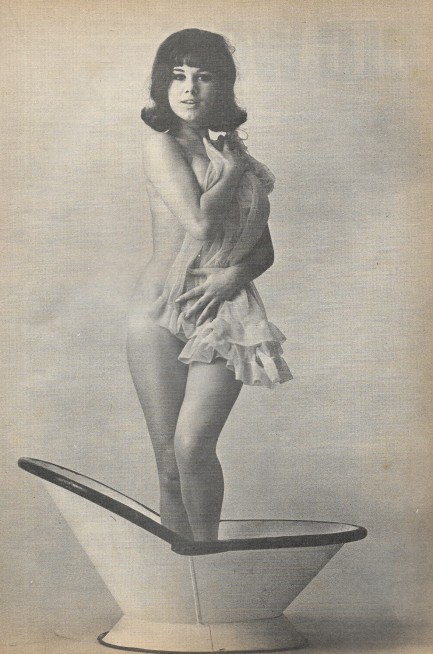 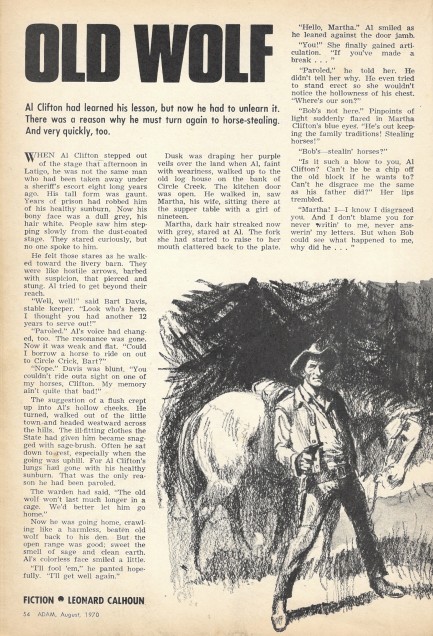 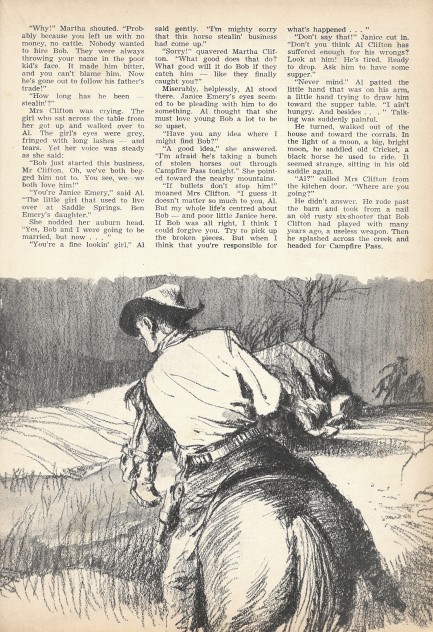  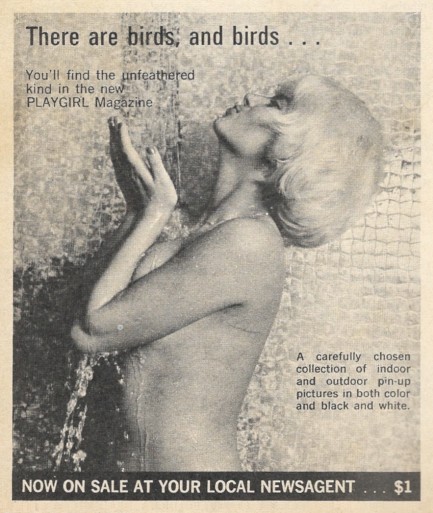 
 Interesting, full of stories, and very well read. 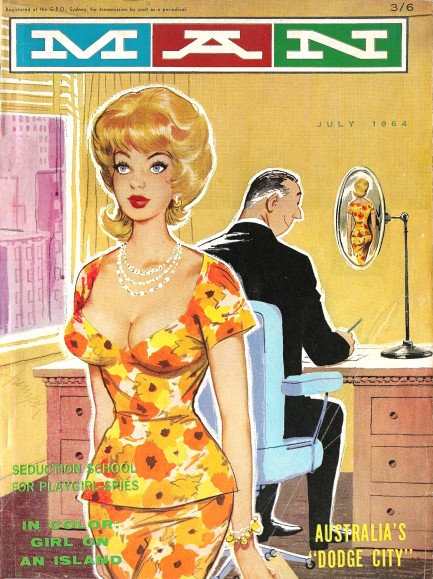
As much as we love K.G. Murray Publishing's men's magazine Adam, especially during its early 1970s period, we have to admit that the succinctly titled Man is probably the prettiest magazine ever produced by the Aussie company. Today's issue from this month in 1964 is an example. The colors explode from the pages. The art, some of which is by Jack Waugh and the single-monikered Humph, is detailed and lovingly rendered. The format is large (so much so that we had to scan every page you see here in two parts and assemble them in GIMP). And the stories are pure male wish fulfillment.
The magazine was such a popular offering that K.G. Murray even published a pocket edition, which we've already shown you. In today's full-sized edition, as always you get several beautiful models, including one supposedly named Van Leman posing on a sea turtle like it's a coin-operated ride outside a Kwik-E-Mart. We imagine the turtle wasn't happy about it, but how can you tell? It's a turtle. They never look happy. Man also provides a few celebrity shots, including of British actress Gloria Paul, and Danish flash-in-the pan Heidi Hansen. All that and more in many scans down under.
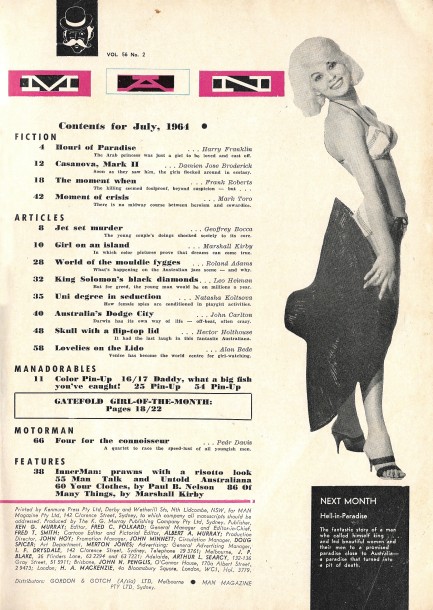 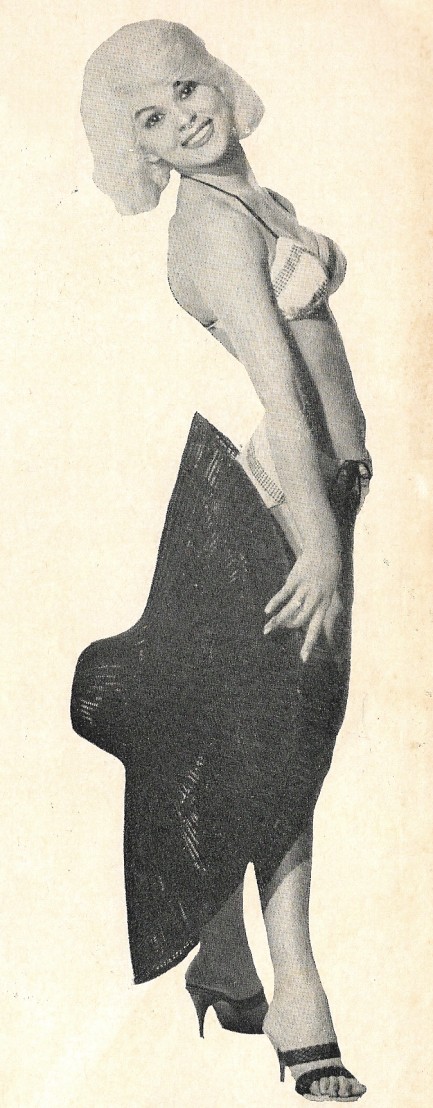 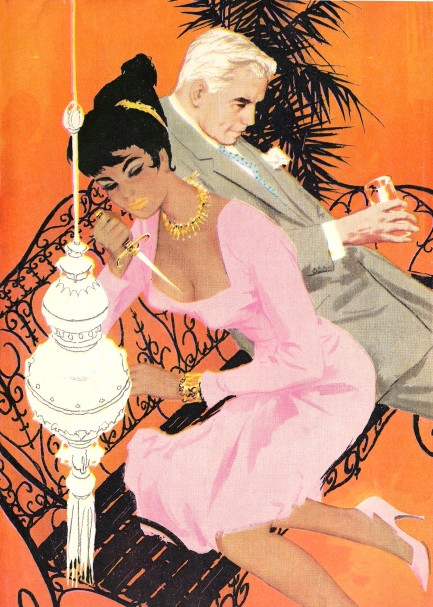 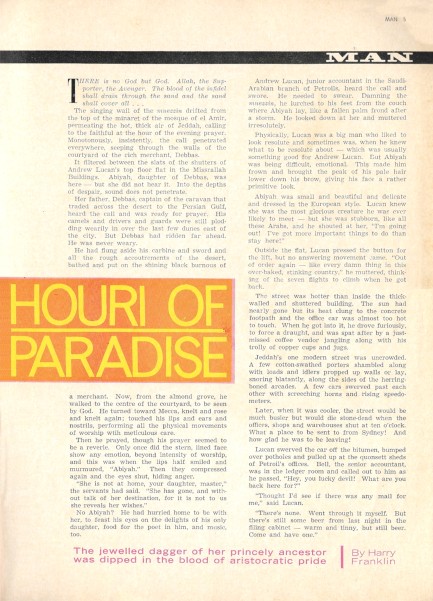 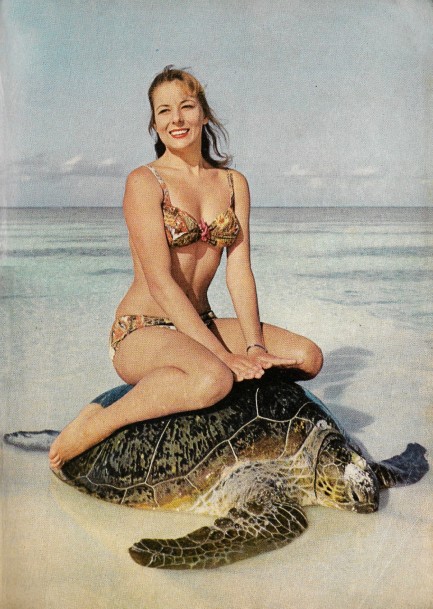 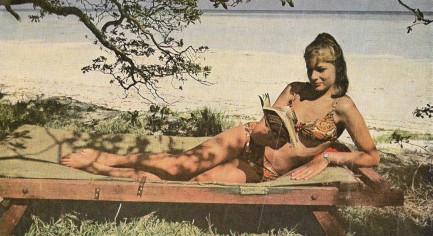 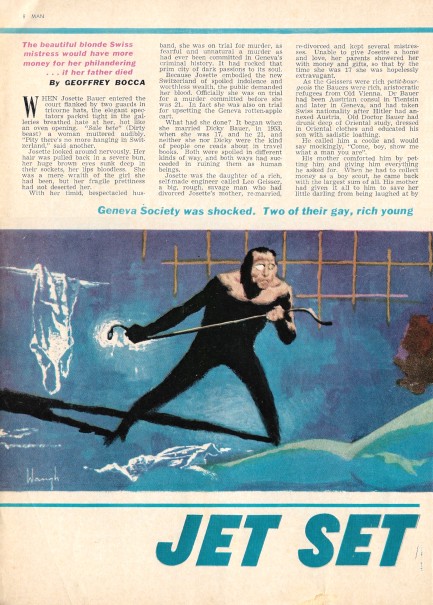 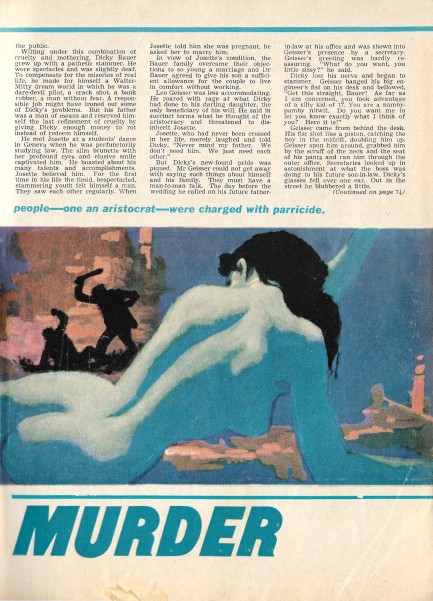 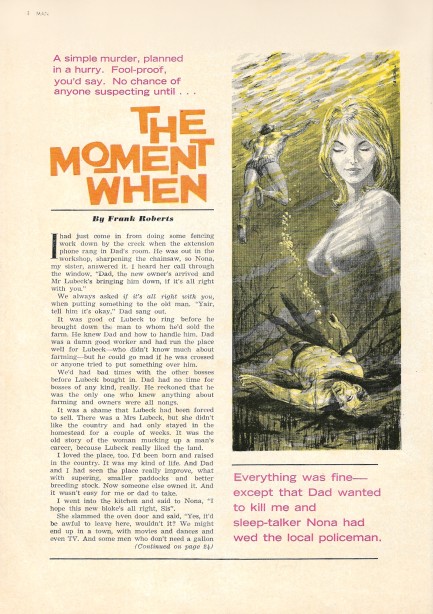 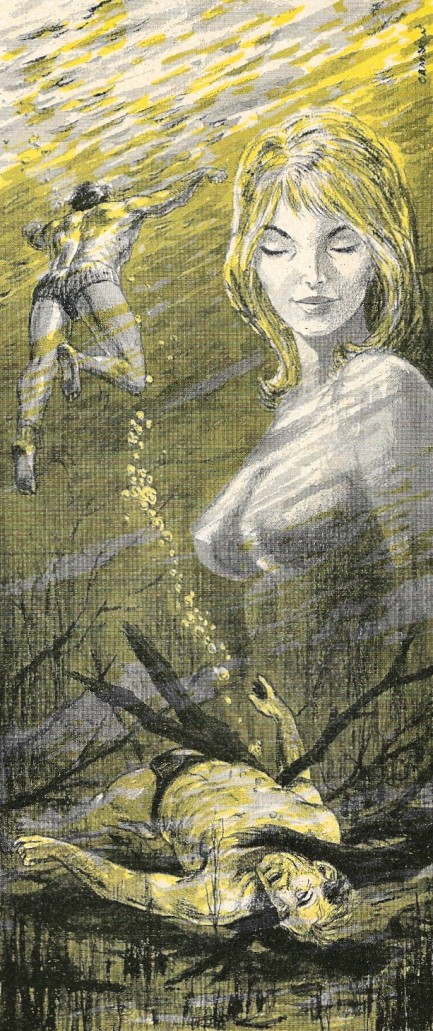 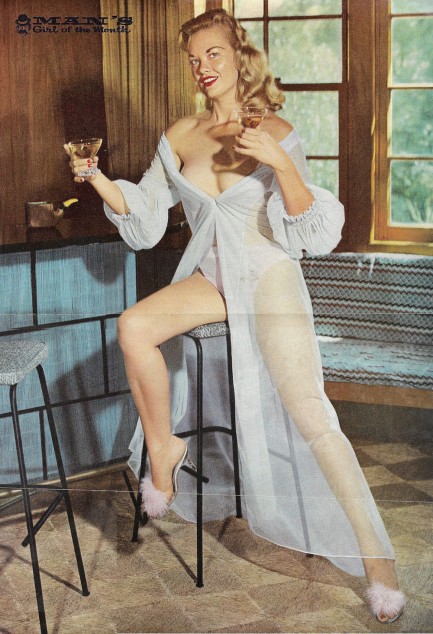 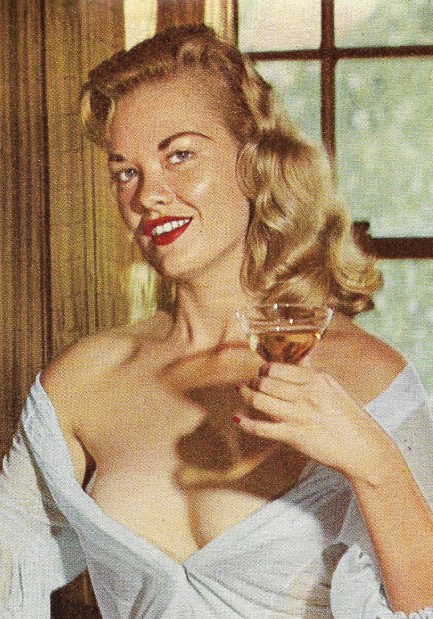  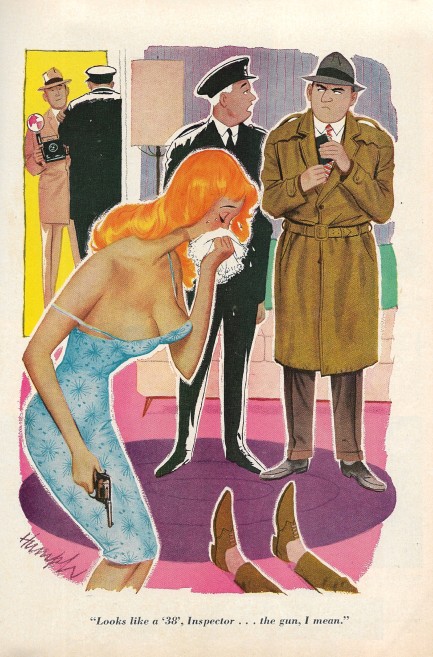 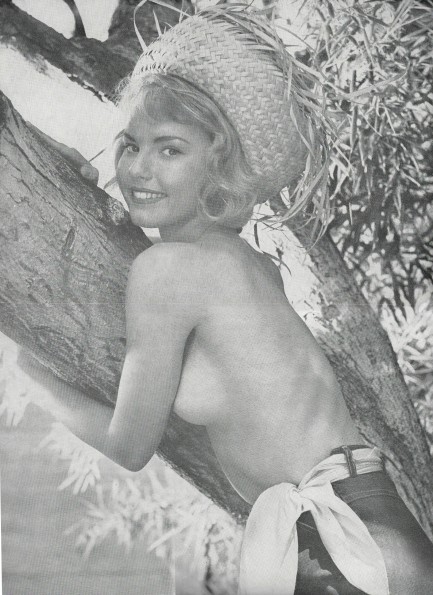 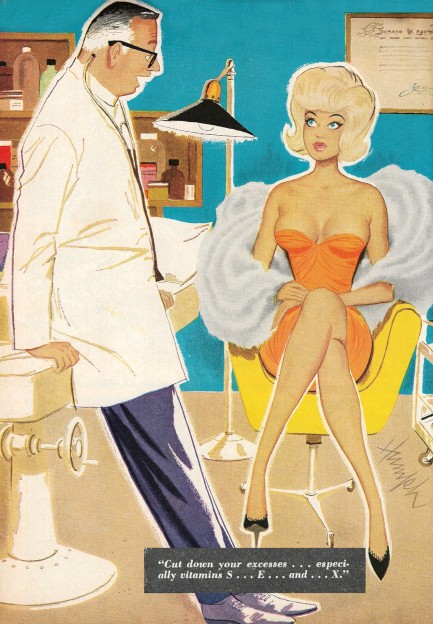 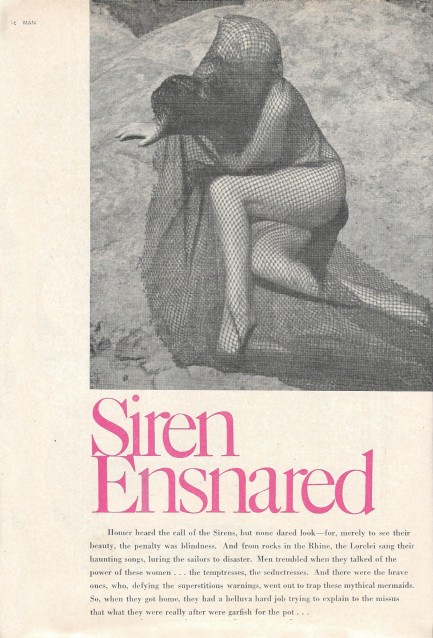 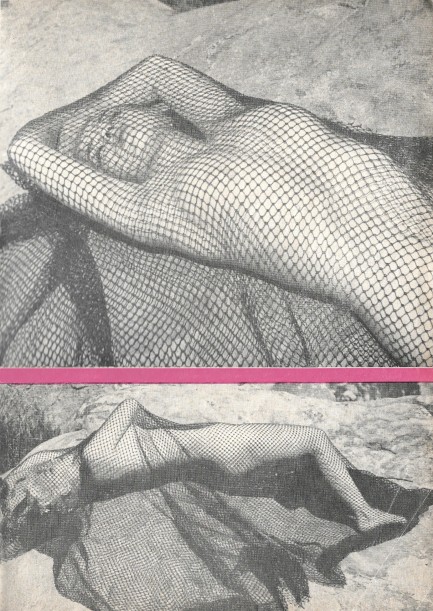 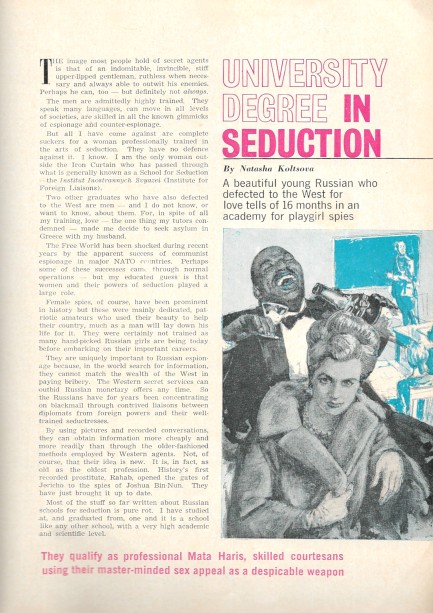 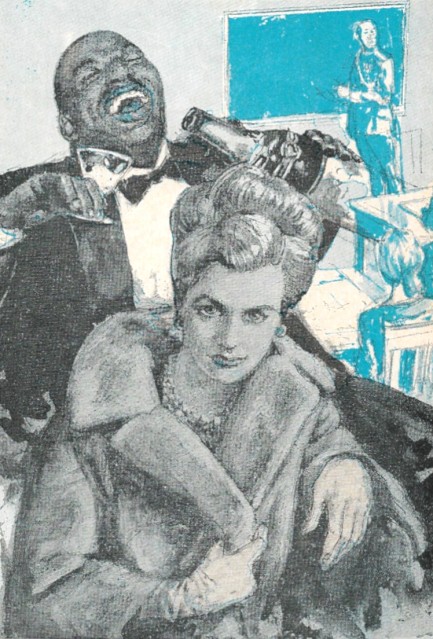 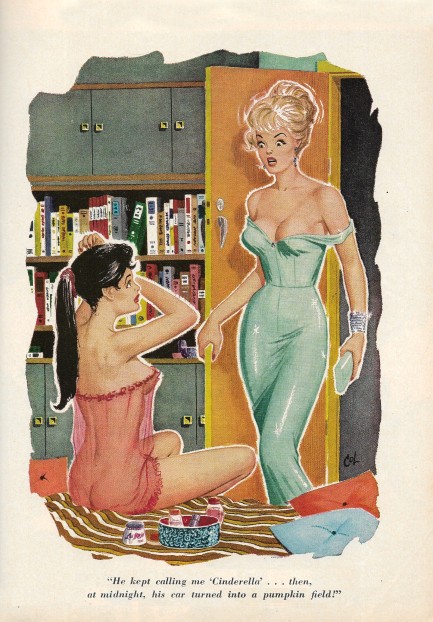 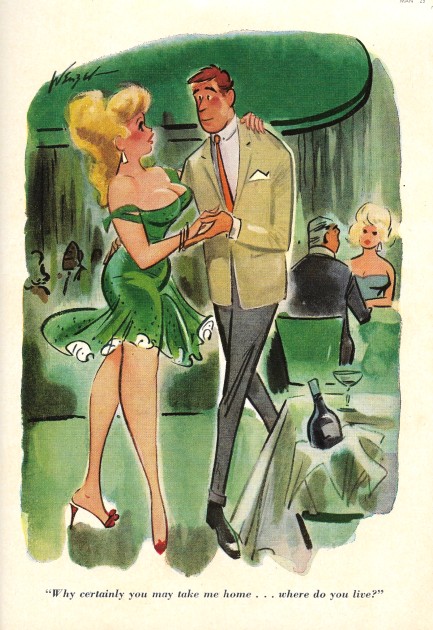 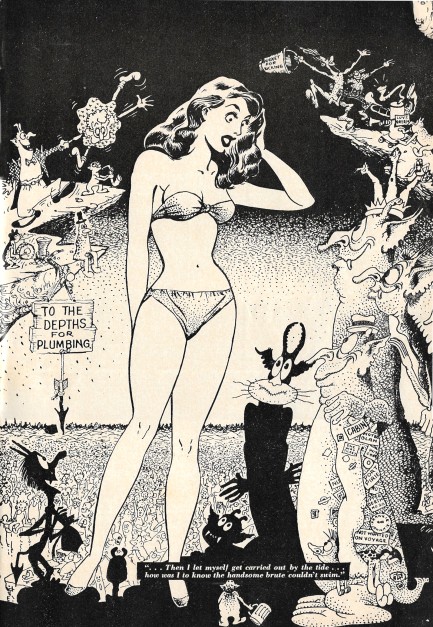 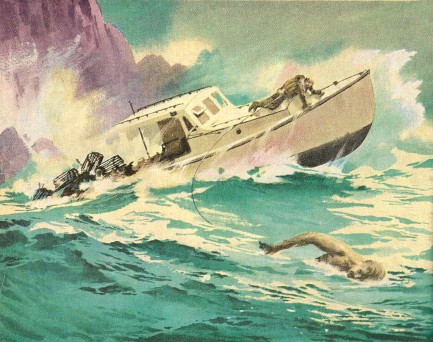 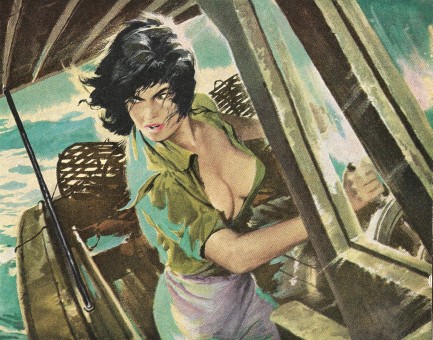 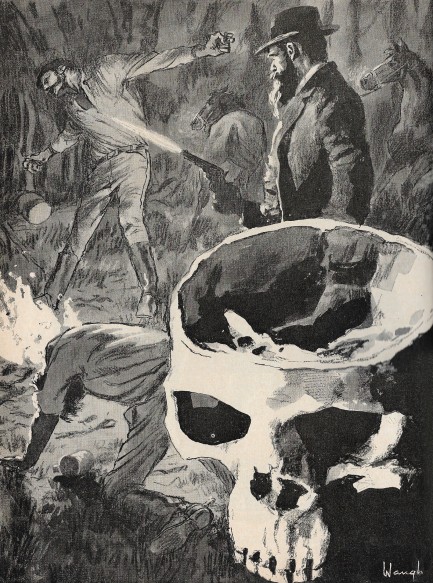 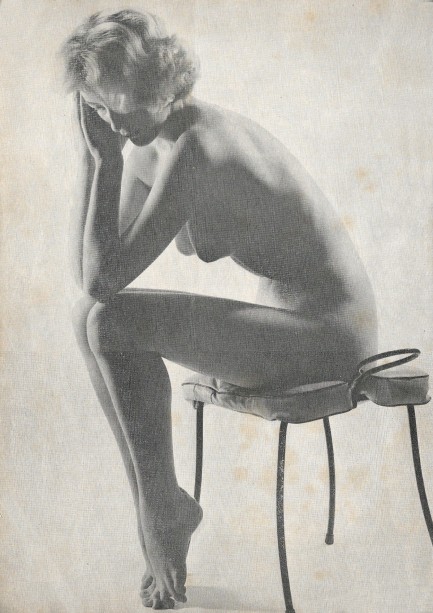 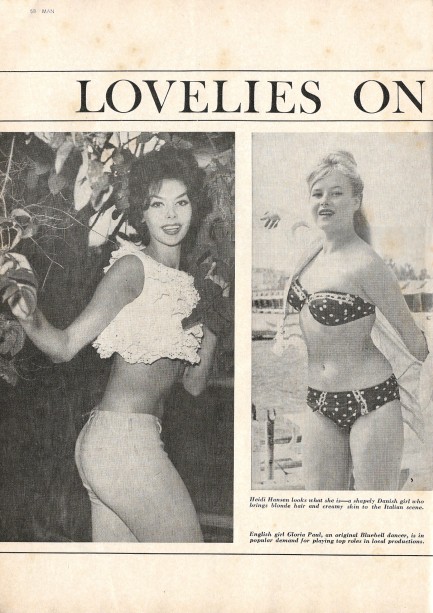 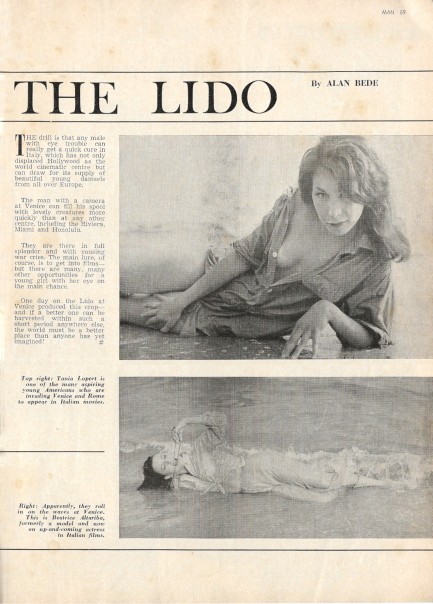 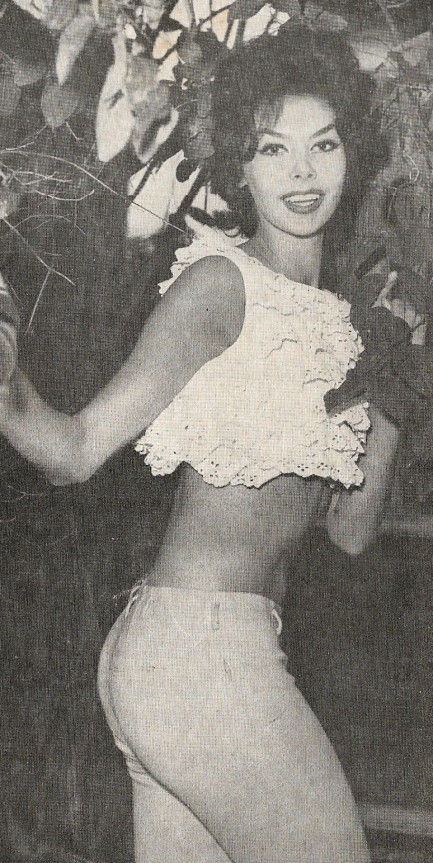 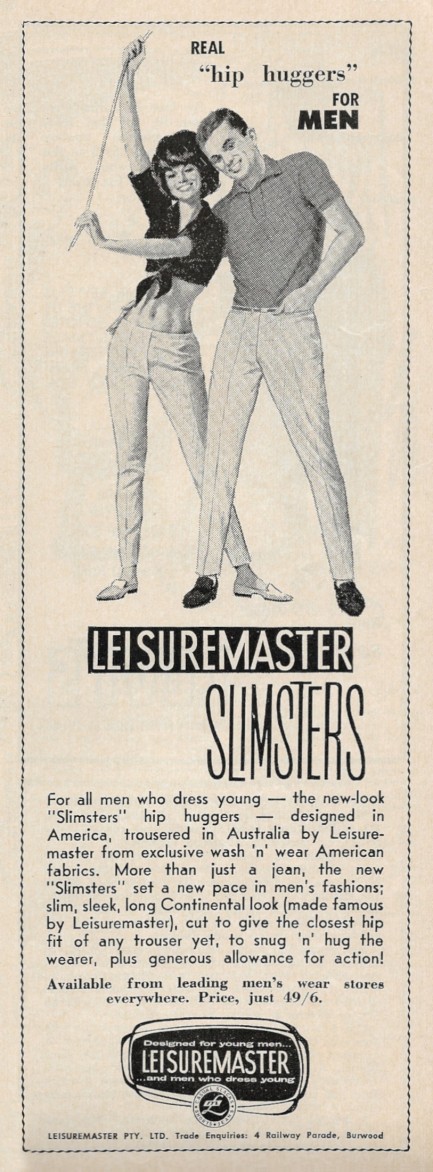 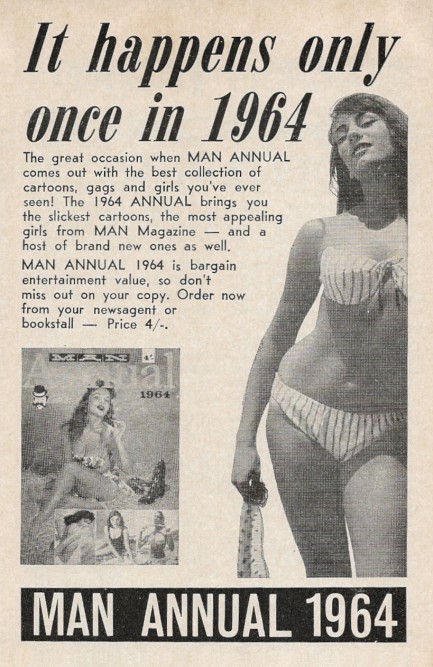
 Who needs a piano player when you have Maxell? 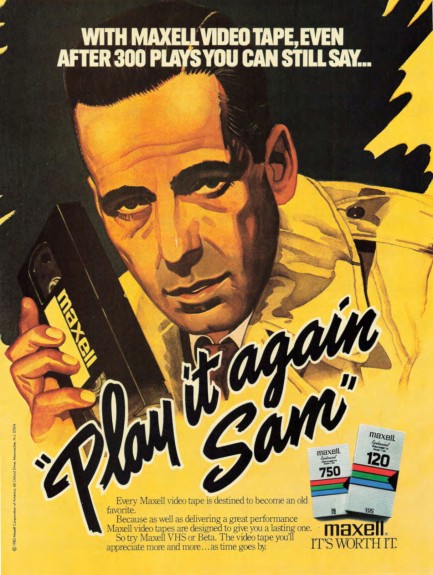
We've never quite been able to wrap our heads around the idea that dead stars can be made to advertise products, but hey, capitalism. Above is an advertisement we ran across featuring Humphrey Bogart in his role as Rick from Casablanca, shilling Hitachi's Maxell videocassettes. This is from 1983. We'd have put this in our pulp advertising feature in the sidebar, but that gadget froze us out years ago. Due to some coding glitches we can neither add nor subtract from there. It's yet another reason for the long promised site redesign that's still tops on the list of things to do (except for traveling, hitting bars and beaches, and hanging with PI-1 & PI-2). Maybe in 2023 it'll actually happen. Hell, if Bogie can embrace the new, so can we.
 The future is a dead Issue. 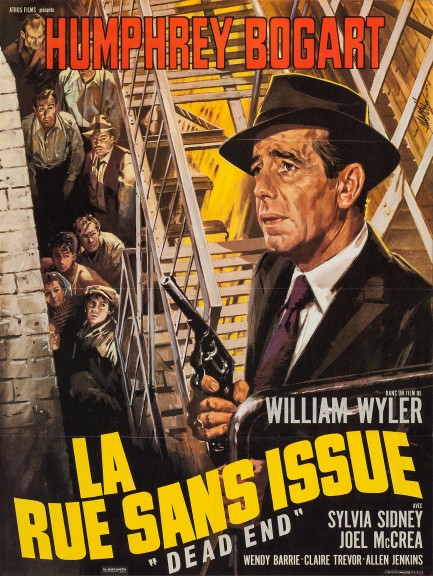
Once again we've chosen what we think is the best poster for a vintage film. In this case it's the urban drama Dead End with Humphrey Bogart, and the poster is one painted by Jean Mascii for the French release as La rue sans issue. Bogart features prominently in both the art and film, but the rest of cast includes Sylvia Sidney, Joel McCrea, Claire Trevor, and Wendy Barrie. We're talking good, solid actors—two of them future Academy Award winners—and they make Dead End an excellent movie. In addition it was based on a play by Sidney Kingsley, with the script penned by Lillian Hellman, more top talent. Kingsley had already won a Pulitzer Prize, and Hellman had written many hit plays. The plot of Dead End covers a day on a slummy dead end street in Manhattan on the East River, and the characters that interact there. The area is in the midst of gentrification, with fancy townhouses displacing longtime residents mired by the effects of the Great Depression. Because of construction on the next block the cosseted owners of a luxury home must for several days use their back entrance, which opens onto the dead end street. Thus you get interaction between all levels of society. There are the lowliest streets punks, an educated architect who can't find work, a woman who intends to marry for security instead of love, a gangster who's returned to his old neighborhood hoping to reconnect with his first love, and the rich man and his family.
There's plenty going on in the film, but as always we like to keep our write-ups short, so for our purposes we'll focus on the gangster, Humphrey Bogart, and his former girl, Claire Trevor. Bogart has risen to the top ranks of crime through smarts and ruthlessness, but to him Trevor represents a cleaner past and possibly a better future. He waits on the street for a glimpse of her, and when that finally happens he's thrilled. Trevor is less so, but there's no doubt she still loves Bogie. When he says he'll take her away from the slum she balks. It soon dawns on Bogie that she doesn't intend to leave, and he's angry and confused. Trevor is evasive at first, then, pressured by Bogart, finally shouts, “I'm tired! I'm sick! Can't you see it! Look at me good! You're looking at me the way I used to be!” With that she moves from shadow:
Into light: Bogart takes a good look, from bottom to top:
And he realizes she is sick. Though it's unspoken, he realizes she has syphilis. All his dreams come crashing down in that devastating moment. He's disgusted, and it leads to an astonishing exchange of dialogue.
Bogart: Why didn't you get a job?
Trevor: They don't grow on trees.
Bogart: Why didn't you starve first?
Trevor: Why didn't you? Well? What did you expect?
Bogart escaped the poverty of that dead end street through organized crime, and killed on his rise to riches. Trevor had to survive through prostitution. Bogart thinks he's better than her; she tells him he's not. In his toxic male world, murder is less offensive than sex. He's the one who's twisted—not her. In addition to a great film moment, it's a clever Hays Code workaround. Nothing about sex, prostitution, or venereal disease could be stated, but through clever writing, acting, context, and direction—by William Wyler—the facts were clear to audiences. The rest of the story arcs are just as involving, and the movie on the whole is a mandatory drama. Dead End premiered in the U.S. in 1937, and in France today in 1938.

|
 |

The headlines that mattered yesteryear.
2003—Hope Dies
Film legend Bob Hope dies of pneumonia two months after celebrating his 100th birthday. 1945—Churchill Given the Sack
In spite of admiring Winston Churchill as a great wartime leader, Britons elect
Clement Attlee the nation's new prime minister in a sweeping victory for the Labour Party over the Conservatives. 1952—Evita Peron Dies
Eva Duarte de Peron, aka Evita, wife of the president of the Argentine Republic, dies from cancer at age 33. Evita had brought the working classes into a position of political power never witnessed before, but was hated by the nation's powerful military class. She is lain to rest in Milan, Italy in a secret grave under a nun's name, but is eventually returned to Argentina for reburial beside her husband in 1974. 1943—Mussolini Calls It Quits
Italian dictator Benito Mussolini steps down as head of the armed forces and the government. It soon becomes clear that Il Duce did not relinquish power voluntarily, but was forced to resign after former Fascist colleagues turned against him. He is later installed by Germany as leader of the Italian Social Republic in the north of the country, but is killed by partisans in 1945.
|

|
|

It's easy. We have an uploader that makes it a snap. Use it to submit your art, text, header, and subhead. Your post can be funny, serious, or anything in between, as long as it's vintage pulp. You'll get a byline and experience the fleeting pride of free authorship. We'll edit your post for typos, but the rest is up to you. Click here to give us your best shot.

|
|




































































































